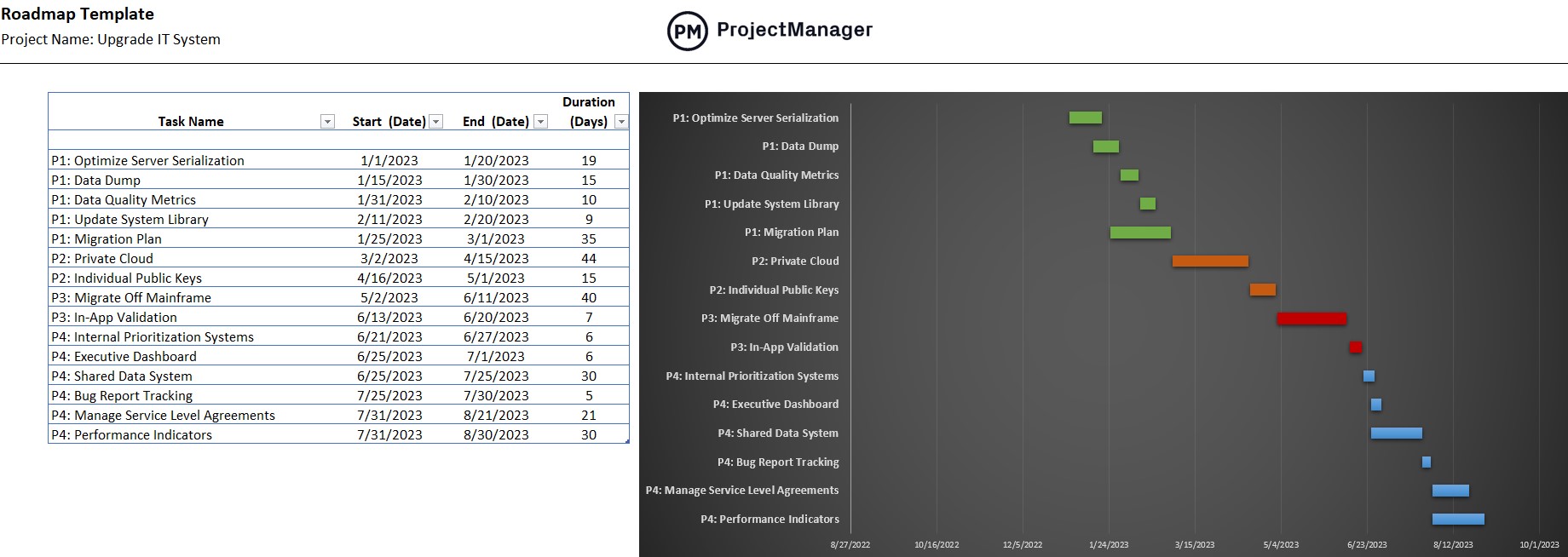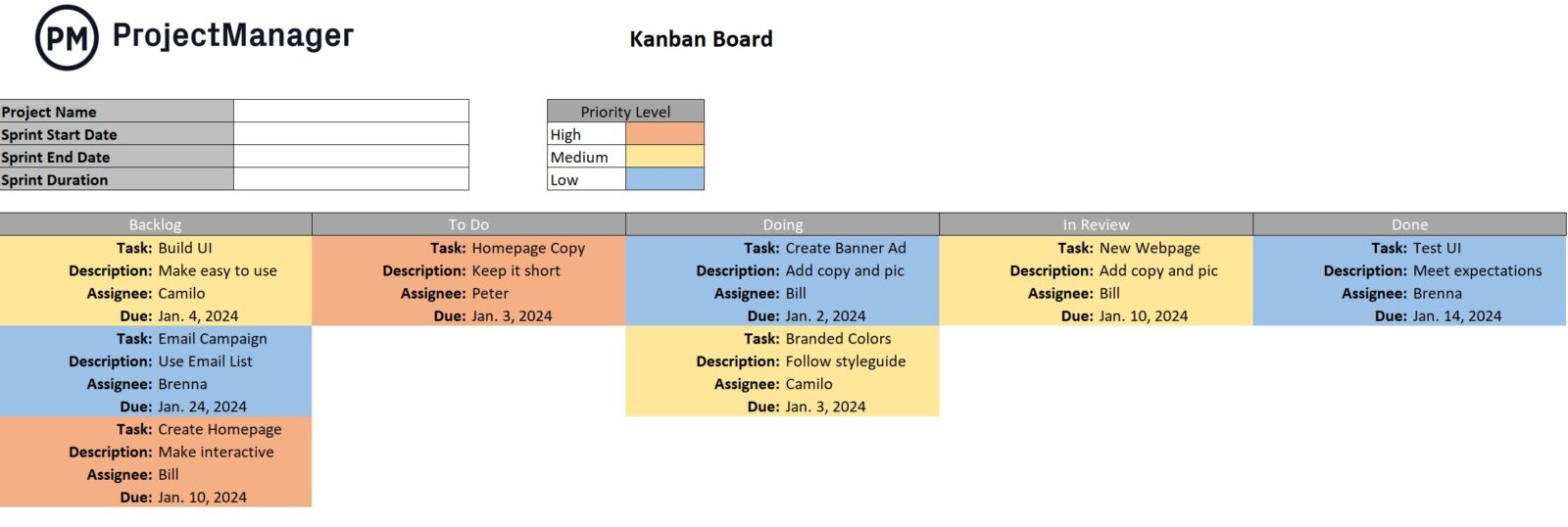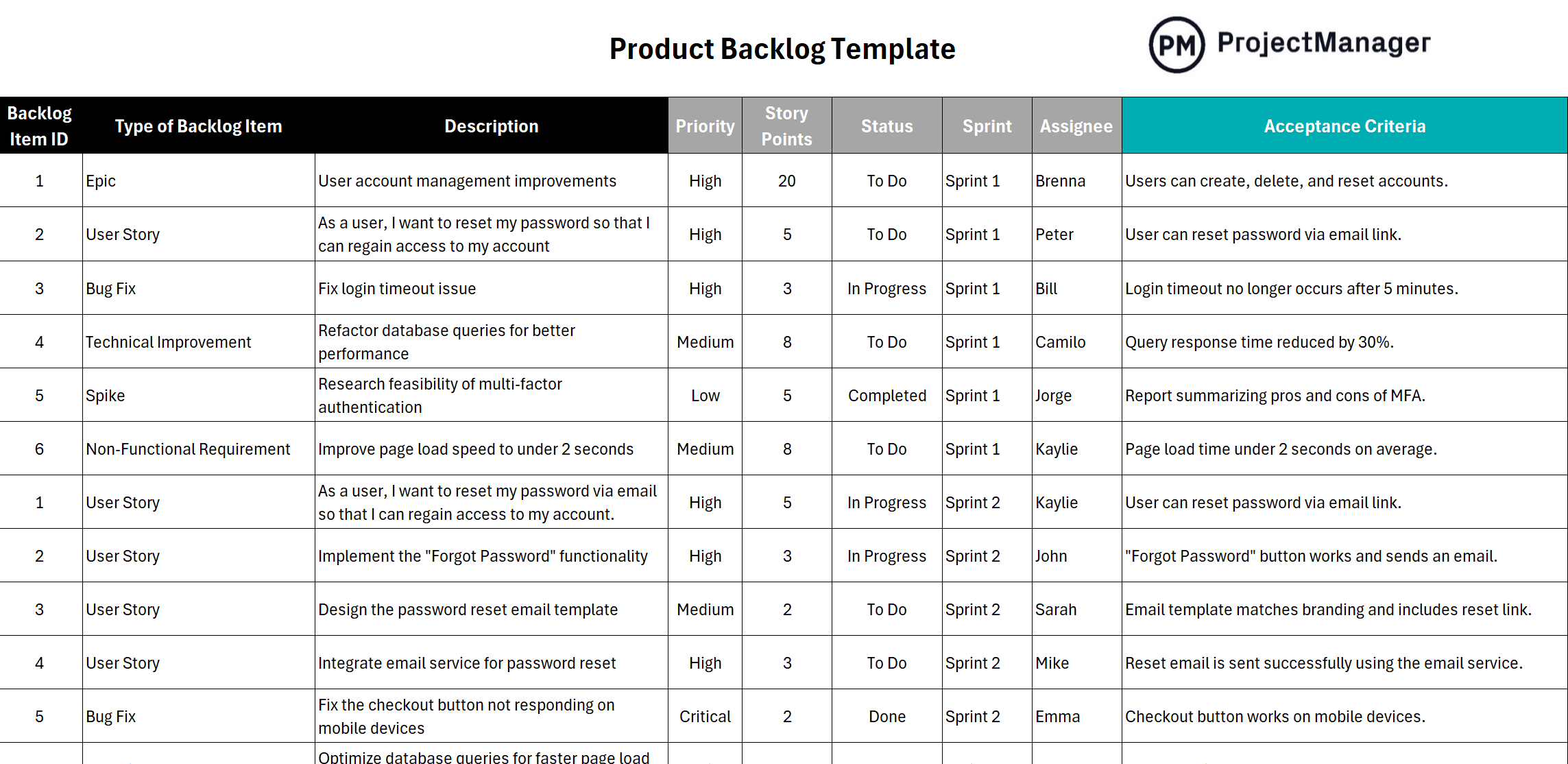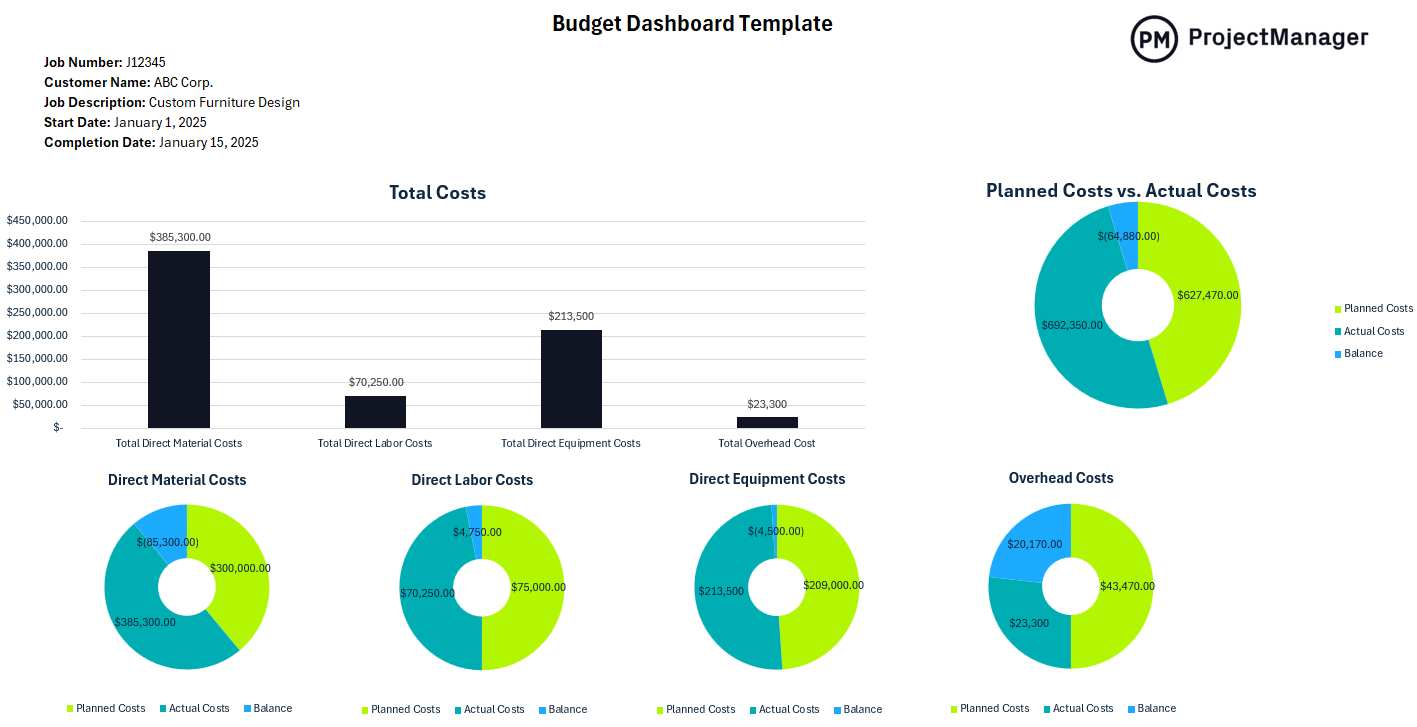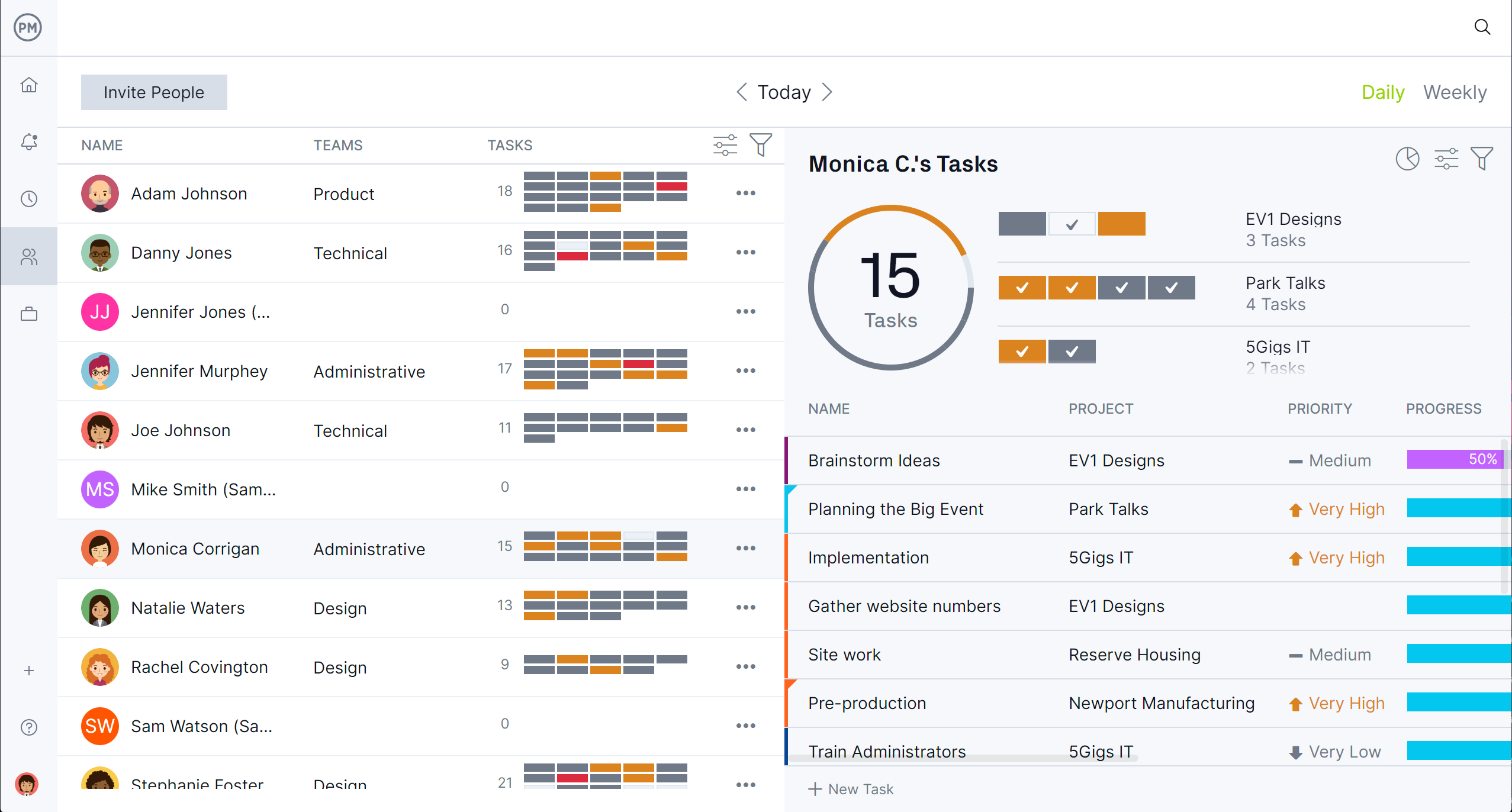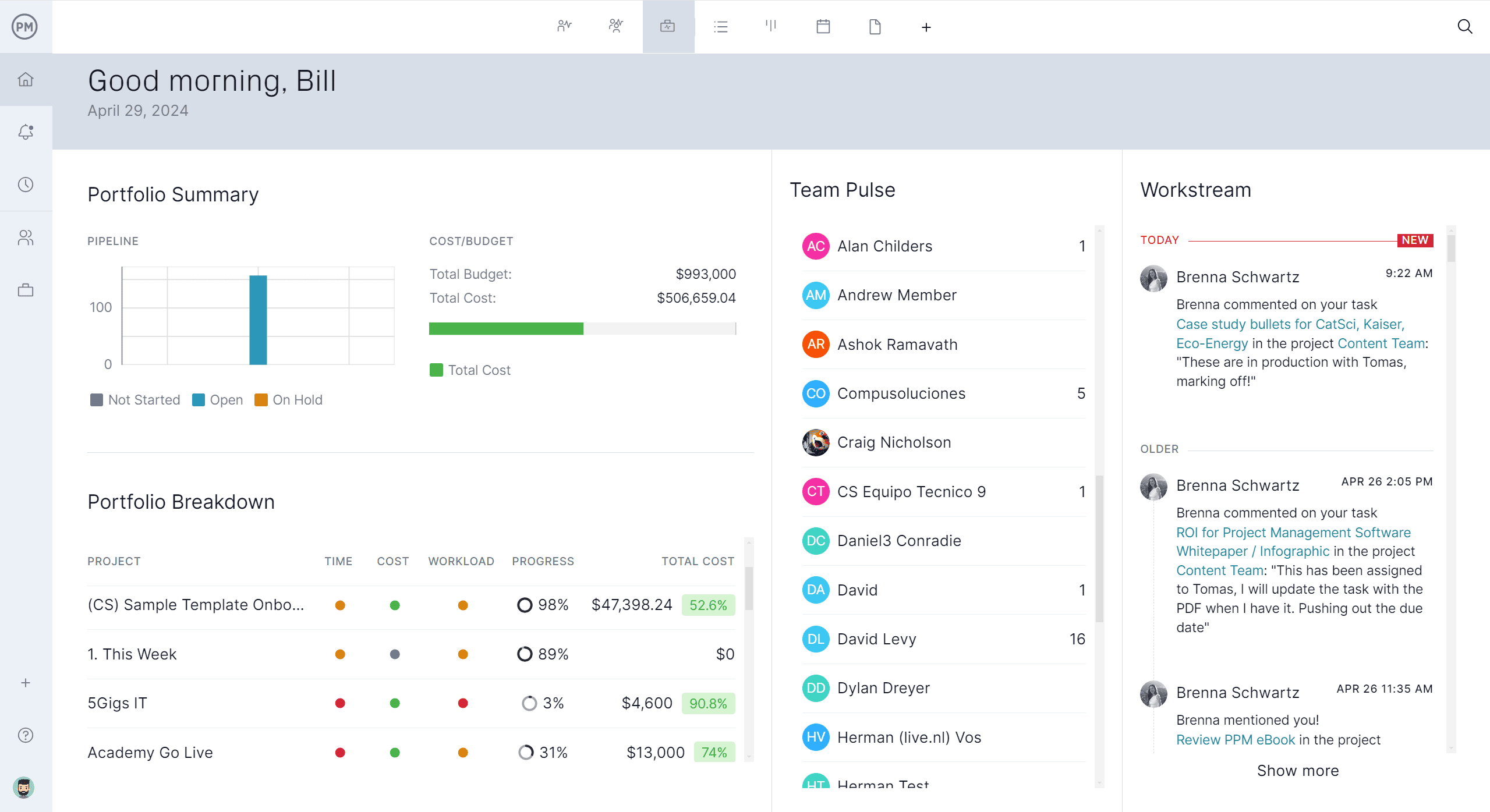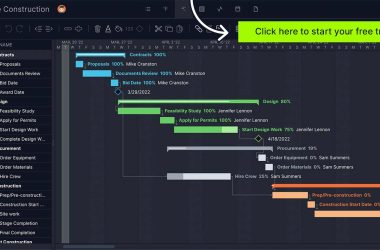Agile project management has become a cornerstone for teams aiming to deliver value quickly and adapt to changing requirements. With its iterative approach and focus on collaboration, agile helps streamline workflows, foster transparency and prioritize customer needs. However, implementing agile effectively requires the right tools—especially agile templates that standardize processes and improve consistency across teams.
Whether you’re new to agile or looking to refine your current setup, having access to ready-made agile templates can significantly reduce setup time and boost productivity. In this roundup, we explore essential agile templates for Excel, Word and more that support key activities such as sprint planning, backlog grooming and more—making it easier to stay organized and aligned from sprint to sprint.
1. Agile Sprint Plan Template
Try this free agile sprint plan template, which opens up in ProjectManager’s kanban board. It is a structured tool that helps teams organize, prioritize and track work items during a sprint within the agile framework. Unlike traditional sprint planning that divides work into time-boxed iterations, a kanban board focuses on continuous delivery and workflow management. The agile template is fully customizable so users can name columns as they please, such as “backlog,” “to do,” “in progress,” “review” and “done,” each representing a stage in the workflow.
This visual layout enables teams to map out user stories, tasks or features, and move them across columns as work progresses. The sprint plan template ensures clarity on what needs to be done, who is responsible and how work is flowing through the system. It also helps teams limit work-in-progress (WIP), identify bottlenecks and maintain focus on delivering value continuously. Agile teams using a kanban benefit from this template’s flexibility, visibility, and its seamless integration with ProjectManager’s resource management features and real-time tracking features, making it easier to adjust plans in real time and keep all stakeholders informed throughout the sprint.
2. Agile Roadmap Template
This free agile roadmap template for Excel is a visual planning tool that outlines the strategic direction of an agile project over time. It helps teams and stakeholders align on goals, priorities and timelines while remaining flexible to accommodate change. Unlike traditional roadmaps that set rigid deadlines, an agile roadmap is dynamic and adaptable, typically organized by themes, epics or features rather than fixed dates.
This agile template includes a list of tasks, their start and end dates as well as the planned duration for each. Once that data has been added to the spreadsheet on the left-hand side of the template, the right-hand timeline is automatically populated with a bar chart visualizing those tasks. It offers a clear overview of what’s planned, what’s in progress and what has been delivered, making it an essential communication tool between product managers, development teams and executives. Agile roadmap templates are especially useful for balancing long-term vision with short-term execution, helping teams stay focused while maintaining agility.
If you’ve already opened the agile sprint plan template in ProjectManager you’re aware of the difference between a static Excel document and dynamic project management software. If you haven’t, then you really should give our roadmap a try. It goes beyond an agile template to schedule tasks, resources and costs, links all four types of task dependencies, filters for the critical path and can set a baseline to track progress in real time. Our software is more customizable than templates. Users can add columns or just open the roadmap in the sheet view, which removes the timeline. Get started with ProjectManager today for free.
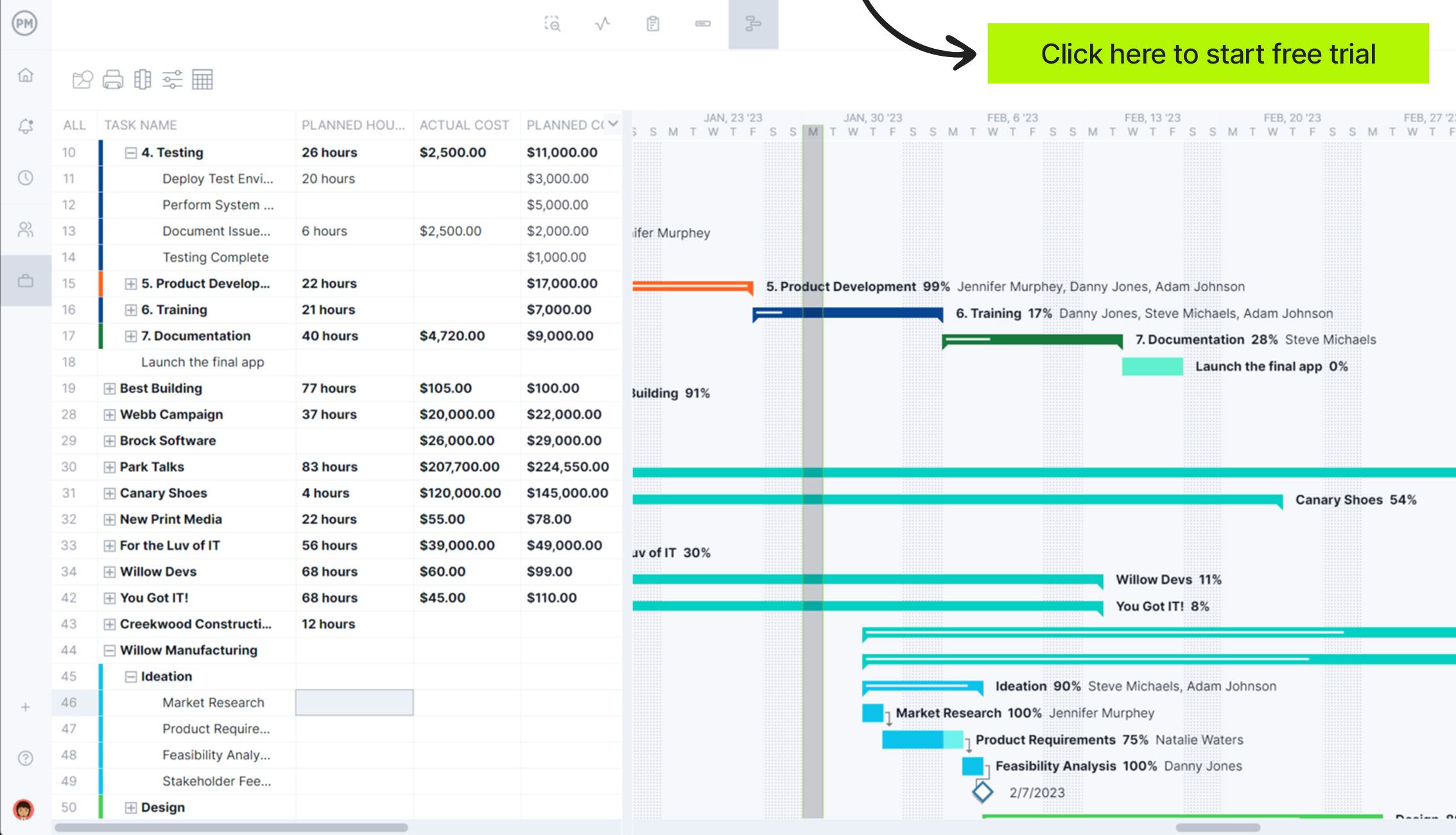
3. Kanban Board Template
Use this free kanban board template for Excel to help teams manage workflow, tasks and project progress in a clear, organized way. This agile template is divided into columns, which can be customized to fit one’s process. Traditionally, these columns are titled: to do, in progress and done. The kanban board offers a flexible view of task status and workload distribution. A kanban template simplifies the setup process by providing a ready-to-use structure that teams can quickly populate with tasks, labels, deadlines and assignees. These templates help standardize processes, ensuring consistency across projects while reducing the time needed to organize and visualize team activities.
Using an agile template improves project transparency and enhances team collaboration by offering visibility into what everyone is working on. Team members can move task cards across columns as work progresses, which encourages accountability and helps identify bottlenecks or delays early on. The visual nature of kanban also supports agile and lean methodologies by enabling teams to limit work in progress (WIP), focus on continuous delivery and optimize efficiency. Kanban templates can adapt to nearly any industry or team workflow, making them an essential tool for modern project and task management.
4. Gantt Chart Template
Download this free Gantt chart for Excel to illustrate a project schedule over time. It uses horizontal bars to represent tasks, with the position and length of each bar reflecting the task’s start date, duration and end date. Tasks are typically organized along the vertical axis, while the timeline runs along the horizontal axis. This layout helps teams see what work is scheduled, what tasks depend on others and how resources are allocated. Originally designed for traditional, waterfall-style project management, Gantt charts have evolved into flexible, dynamic tools used in various methodologies, including agile. This is an agile template that is especially useful when working with cross-functional teams, some of whom might be working in a more traditional methodology.
While agile emphasizes flexibility and iterative development, Gantt charts can be adapted to agile workflows to provide structured visibility without undermining agility. For example, in an agile sprint, a Gantt chart can map out sprint goals, user stories and tasks within a two-week period. It can also help track multiple sprints over a release cycle or visualize epics and features across a product roadmap. Teams can adjust timelines in real time to reflect changes in backlog prioritization or sprint planning. By combining agile’s flexibility with the scheduling power of Gantt charts, teams benefit from a hybrid approach that enhances coordination, transparency and timely delivery, especially in larger or cross-functional projects.
5. Product Backlog Template
Use this free product backlog template for Excel to capture, organize and prioritize all the work items, features, enhancements, bug fixes and technical tasks that need to be addressed in a product development process. In agile methodologies, particularly scrum, the product backlog serves as the single source of truth for the team’s work and is maintained by the product owner. This agile template includes fields such as the item title, description, priority, status, sprint assignment and acceptance criteria. By using a standardized template, teams can ensure clarity, consistency and alignment on what needs to be built and why, helping avoid confusion and scope creep during iterations.
As an agile template, the product backlog plays a central role in facilitating iterative planning and continuous delivery. It provides a dynamic list of user stories and requirements that evolve as the project progresses and as customer needs change. During sprint planning meetings, agile teams pull items from the top of the backlog—those of highest priority and readiness—and break them into manageable tasks for the upcoming sprint. This workflow allows for flexibility and responsiveness to feedback, while the template structure keeps the process organized and transparent. A well-maintained product backlog template helps the team focus on delivering value each sprint and serves as a communication bridge between stakeholders and the development team.
6. Test Plan Template
Use this free test plan template for Excel to outline the strategy, resources, scope, schedule and specific tasks required for testing a software product or system. It includes sections such as the objective of the test, test items, features to be tested, testing tasks, responsibilities, resources, environment setup, schedule, risk identification and criteria for test success or failure. This agile template serves as a comprehensive guide for QA teams to follow and helps align the testing process with business and technical requirements. By using a standardized template, organizations ensure consistency, repeatability and thorough documentation across all testing activities, reducing the chances of errors and oversights.
The test plan plays a key role in supporting continuous integration and delivery, which makes it an ideal agile template. Unlike traditional test plans that are static and created only once, an agile test plan is dynamic, evolving throughout the development lifecycle. It integrates with iterative cycles and is frequently updated to reflect the changing scope and priorities of the project. Agile test plan templates are often lightweight and focus on defining what needs to be tested in each sprint, how automated and manual testing will be handled and how acceptance criteria will be validated. These templates ensure testing is embedded within the development process rather than treated as a separate phase, promoting collaboration between developers, testers and product owners to deliver higher-quality software more efficiently.
7. Task Tracker Dashboard Template
This free task tracker dashboard template for Excel is used to monitor and manage tasks across teams and workflows. It provides a centralized view of all ongoing, pending and completed tasks, allowing project managers and team members to assess progress, identify bottlenecks and ensure accountability. This agile template task tracker dashboard includes components such as task lists, assignee names, due dates, priority levels and status indicators (e.g., not started, in progress, completed). These dashboards enable teams to stay aligned on goals and deadlines.
In agile environments, a task tracker dashboard template works as an agile template by supporting transparency, responsiveness and continuous improvement. Agile teams rely on visual boards to keep track of the user stories, tasks and bugs that populate each sprint. The dashboard becomes an evolving map of the team’s workflow, making it easier to conduct daily standups, plan sprints and review progress during retrospectives. The dashboard empowers team members to self-manage their work, flag issues early and adapt quickly to changing priorities—all key tenets of agile project management.
8. Budget Dashboard Template
Download this free budget dashboard template for Excel to provide a clear, real-time overview of a project’s or organization’s budget performance. It consolidates key financial data into an easy-to-read layout, featuring graphs, charts and tables that display budgeted versus actual expenditures, spending by category, cost trends over time and remaining balances. This agile template allows stakeholders to track financial health at a glance. Users can monitor income, expenses, variances and financial KPIs, improving oversight and supporting timely decision-making.
As an agile template, a budget dashboard is especially valuable for Agile teams and product owners who must continuously evaluate cost efficiency throughout project iterations. Agile projects involve frequent changes in scope and resource allocation, and a budget dashboard helps teams stay financially agile by tracking how spending aligns with sprint goals and overall product value. This visibility allows for better forecasting, quicker adjustments to funding needs, and data-driven prioritization of features or epics. Because agile emphasizes adaptive planning and continuous delivery, a well-maintained budget dashboard ensures financial control without slowing down development, keeping teams accountable and focused on delivering value within financial constraints.
How ProjectManager Takes Agile Templates Further
Agile is an iterative approach that demands flexibility, which is alien to static documents like templates. Much more appropriate would be to upgrade to project management software. ProjectManager is award-winning project and portfolio management software that offers an all-in-one dynamic platform that integrates agile tools with broader project management capabilities. There are kanban boards that are the workhorse of any agile project, but also Gantt charts, task, list and calendar views that allow cross-functional teams to work together in real time. Unlike templates, our software provides real-time updates, collaboration tools, automated workflows with task approvals and other tools to give users the flexibility to adapt their workflow as projects evolve without needing to switch tools.
Stay Efficient, Balanced and Adaptive With Resource Management Features
Agile emphasizes flexibility, rapid iterations and continuous improvement, all of which require clear visibility into team capacity and resource allocation. Our software provides real-time workload charts to see allocation and balance workload to keep teams productives, and availability tracking, allowing scrum masters, product owners and team leads to ensure that no one is overburdened and that tasks are evenly distributed across the team. A team page gives users a summary of the team’s activities, which can be filtered by progress or priority, and tasks updated without leaving the page.

Get Transparency, Accountability and Continuous Improvement With Real-Time Project Dashboards and Reports
With real-time tracking features like dashboards for projects or portfolios, progress bars and detailed reports, teams can instantly see how work is progressing across sprints, backlogs and iterations. This visibility supports daily standups, sprint reviews and retrospectives by providing clear, up-to-date metrics on completed tasks, remaining workload and team performance. Dashboards and reports help identify blockers, missed deadlines or scope creep early, allowing teams to adapt quickly. ProjectManager also integrates with kanban boards, Gantt charts and task lists, giving agile teams flexibility in how they view and monitor work.
Related Agile Project Management Content
There’s much more to agile project management than agile templates. For readers who want to explore the topic further, below are links to some articles we’ve published to our blog.
- Agile Project Management: Principles, Meetings, Values & Tools
- 5 Tips for Better Agile Release Planning (Scrum Included)
- The 12 Agile Principles: Definitions & How to Use Them
- How to Make an Agile Workflow for Your Team
- Agile Project Planning: An Introduction for Beginners
- What Is the Definition of Done for Agile Teams?
ProjectManager is online project and portfolio management software that connects teams, whether they’re in the office or out in the field. They can share files, comment at the task level and stay up to date with email and in-app notifications. Join teams at Avis, Nestle and Siemens who are using our software to deliver successful projects. Get started with ProjectManager today for free.
The post 8 Agile Templates: Which Free Agile Template is Right for You? appeared first on ProjectManager.


